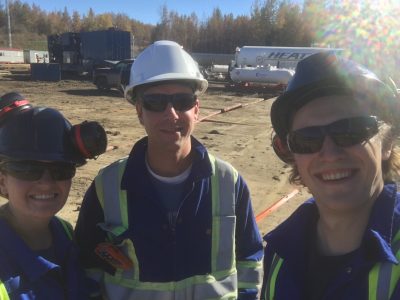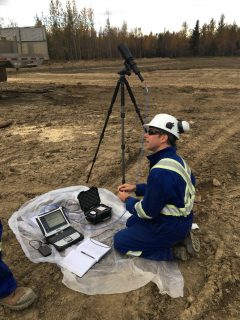This past summer the FlareNet Network worked with its Board of Directors and industry partners to facilitate site access for field measurements in Canada. As a result, FlareNet researchers have just returned from its first-ever dedicated field measurement campaign during a flowback event at a well site in Alberta. The team successfully collected sky-LOSA image data as well as flare gas sample and flowrate data. This information will be used to calculate black carbon emission rates for flares and conditions typical of Canadian operations, and is a key first step toward developing improved emission factors for use in Canadian reporting.
Sky-LOSA (Line-Of-Sight Attenuation using sky-light), is a FlareNet developed technology that enables remote optical measurement of soot concentration (black carbon) and emission rates in flare plumes. With previous support from the World Bank Global Gas Flaring Reduction (GGFR) partnership, sky-LOSA has been successfully deployed in Uzbekistan, Ecuador, and Mexico, and, as of earlier this month, Alberta, Canada.
FlareNet sent some of its most experienced researchers into the field for this important first campaign – Project Engineer Melina Jefferson, and PhD candidates Joshua Armitage and Bradley Conrad.
Continued site access will be essential to completing field measurements on a statistically significant number of flares. FlareNet is especially grateful for the strong leadership of its Board of Directors and industry partners for making these first measurements a success. This support and engagement is vital to achieving FlareNet’s research mandate to provide quantitative data, models, and measurement techniques for flare generated pollutant emissions, as part of enabling science-based regulations, accurate pollutant inventories, and engineered mitigation strategies to minimize environmental impacts in the energy sector.
